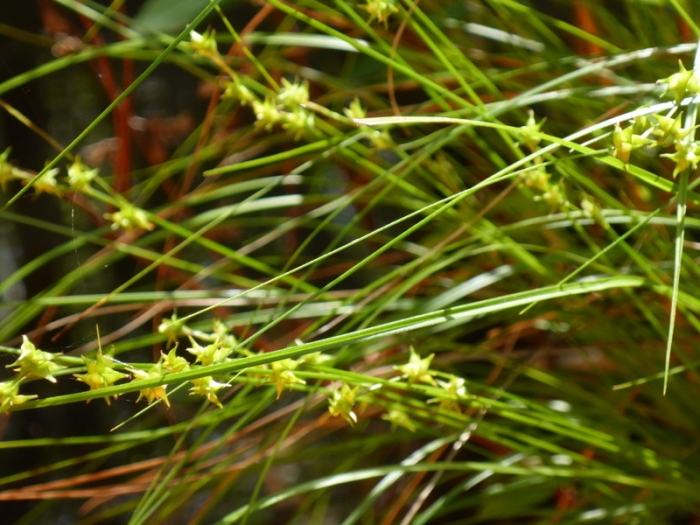Prickly Bog Sedge
(Carex atlantica)
Prickly Bog Sedge (Carex atlantica)
/
/

mfeaver
CC BY 4.0
Image By:
mfeaver
Recorded By:
Copyright:
CC BY 4.0
Copyright Notice:
Photo by: mfeaver | License Type: CC BY 4.0 | License URL: http://creativecommons.org/licenses/by/4.0/ | Rights Holder: mfeaver | Publisher: iNaturalist | Date Created: 2019-03-12T13:51:30-07:00 |

























Estimated Native Range
Summary
Carex atlantica, commonly known as Prickly Bog Sedge, is a perennial herb native to wetland habitats such as bogs, acidic seeps, and moist meadows in eastern North America, including the Atlantic coastal plain, and the island of Hispaniola. It is a sedge that forms dense clumps and typically grows to a height of 10-30 inches (25-76 cm). Prickly Bog Sedge has narrow, grass-like leaves and produces inconspicuous greenish-brown flowers in late spring to early summer. The flowers are not particularly showy, but the plant is valued for its ability to thrive in wet conditions and its role in supporting wetland ecosystems.
Prickly Bog Sedge is often used in rain gardens, wetland restoration projects, and as a ground cover in moist garden areas. It is appreciated for its low maintenance requirements and its adaptability to wet, acidic soils. It prefers full sun to part shade and requires consistent moisture to thrive. While not commonly afflicted by diseases, it can suffer in conditions that are too dry or in soils that are not acidic. This sedge is not known for being invasive and is a beneficial addition to native plant gardens due to its ecological value.CC BY-SA 4.0
Prickly Bog Sedge is often used in rain gardens, wetland restoration projects, and as a ground cover in moist garden areas. It is appreciated for its low maintenance requirements and its adaptability to wet, acidic soils. It prefers full sun to part shade and requires consistent moisture to thrive. While not commonly afflicted by diseases, it can suffer in conditions that are too dry or in soils that are not acidic. This sedge is not known for being invasive and is a beneficial addition to native plant gardens due to its ecological value.CC BY-SA 4.0
Plant Description
- Plant Type: Grass
- Height: 1-2 feet
- Width: 1-1.5 feet
- Growth Rate: Moderate
- Flower Color: N/A
- Flowering Season: Spring, Summer
- Leaf Retention: Deciduous, Semi-deciduous
Growth Requirements
- Sun: Full Sun, Part Shade
- Water: High
- Drainage: Medium, Slow
Common Uses
Low Maintenance, Water Garden
Natural Habitat
Wetland habitats such as bogs, acidic seeps, and moist meadows in eastern North America, including the Atlantic coastal plain
Other Names
Common Names: Atlantic Sedge, Prickly Sedge, Atlantic Star Sedge, Eastern Sedge
Scientific Names: , Carex atlantica, Carex atlantica var. atlantica,
GBIF Accepted Name: